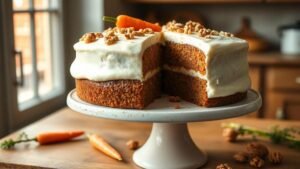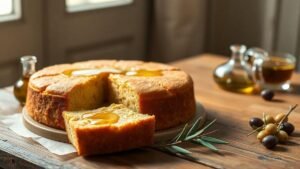Soft, Fluffy Cake Without an Oven: Steamed and Stovetop Methods That Work
I used to treat my oven like a mythical beast. Now I make soft, fluffy cakes without one—by steaming or using a covered stovetop pan. If you can boil water, you can bake: these methods are simple, forgiving, and perfect for small kitchens or quick treats.
Key benefits:
- Make soft, moist cakes without an oven
- Steamed cakes = extra moist, airy crumb
- Stovetop covered-pan = great for flat bakes like banana or yogurt
- Minimal tools, big flavor: tips, topping ideas, and storage advice included
Why bake without an oven?
I skip the oven when I want cake fast, when my space is tiny, or when I want a cake an oven might dry out. Steaming locks in moisture; covered-pan cooking keeps edges tender. Both deliver cakes that feel like a warm hug. If you prefer a different no-oven route, there are also quick methods for microwave bakes.
Reasons:
- No oven available
- Smaller batches without heating the whole house
- Moist, soft textures from steam
- Quick, low-fuss baking
Method 1: Steamed Cake (super soft texture)
Steamed cake is velvety and moist—excellent with fruit or coconut. This basic recipe is forgiving and friendly; the approach follows the same principles as other successful easy steamed cake recipes.
Ingredients
| Ingredient | Amount |
|---|---|
| All-purpose flour | 1 1/2 cups (180 g) |
| Sugar | 3/4 cup (150 g) |
| Baking powder | 1 1/2 tsp |
| Salt | 1/4 tsp |
| Eggs | 2 large |
| Milk | 1/2 cup (120 ml) |
| Vegetable oil or melted butter | 1/3 cup (80 ml) |
| Vanilla extract | 1 tsp |
| Optional: lemon zest or coconut | 1 tbsp |
Equipment
| Item | Notes |
|---|---|
| Large pot with lid | Tall enough for a rack |
| Steaming rack or small bowl | Keeps pan above water |
| 6–8 inch cake pan | Greased and lined (or try going panless with tips from panless baking) |
| Kitchen towel | Catches drips and traps steam |
Instructions
- Mix dry: flour, sugar, baking powder, salt.
- Whisk eggs, milk, oil, vanilla.
- Fold wet into dry until just combined—don’t overmix.
- Pour batter into prepared pan; cover pan with foil.
- Add ~1 inch water to pot, place rack and pan inside.
- Bring to a simmer, cover pot with lid wrapped in a towel.
- Steam over low heat for 30–40 minutes. Test with a toothpick.
- Cool slightly, unmold, and serve warm or room temperature.
Tip: The towel under the lid catches condensation and keeps the top pretty. For egg-free or allergy-friendly versions, adaptations are possible—see guidance on eggless and powder-free cakes.
Method 2: Stovetop Cake in a Covered Pan
For flat cakes—banana, yogurt, snack cakes—treat your skillet like a tiny oven. Low heat and patience are the keys. For yogurt-based batter ideas and ratios that keep cakes tender and flavorful, check a guide to a soft cake made with yogurt.
Ingredients
| Ingredient | Amount |
|---|---|
| All-purpose flour | 1 cup (120 g) |
| Sugar | 2/3 cup (135 g) |
| Baking powder | 1 tsp |
| Salt | pinch |
| Egg | 1 large |
| Plain yogurt or milk | 1/2 cup (120 ml) |
| Oil or melted butter | 1/4 cup (60 ml) |
| Flavoring (banana, cocoa, etc.) | as desired |
Equipment
| Item | Notes |
|---|---|
| Heavy-bottomed skillet with lid | 8–10 inch works well |
| Heat diffuser or trivet | Optional—evens heat |
| 8-inch cake pan or tin | That fits inside skillet |
Instructions
- Mix dry and wet ingredients separately, then fold together until smooth.
- Grease cake pan and pour batter in.
- Place a small trivet or ring in the skillet; add a little water around it (not touching the pan).
- Set cake pan on trivet, cover skillet, and cook on very low heat for 25–35 minutes.
- Test with a toothpick; allow to cool slightly before removing.
This method creates a gentle rise and a tender crumb—think of it as a slow dance between heat and batter.
Tips for perfect results without an oven
- Use low heat: prevents burning and cooks evenly.
- Cover well: traps steam and heat for even baking.
- Line pans: makes unmolding painless.
- Don’t overmix: keeps cake soft, not rubbery.
- Check early: cakes vary—test at the lower end of baking time.
- Towel under lid: stops drops of water from marring the top.
- Rotate pan once if you can: for even color and bake.
- If your cake ends up a bit dry, quick fixes and prevention tips can help—see how to rescue a dry cake.
(Yes, whispering to the pan may improve your mood. Results not guaranteed.)
Flavor ideas that work well without an oven
- Steamed: vanilla, coconut, lemon, pandan
- Stovetop: banana, yogurt, chocolate, spice
- Add-ins: nuts, raisins, chocolate chips (toss in flour first)
Personal note: orange zest once turned a flat cake into breakfast at grandma’s.
Topping ideas (no oven needed)
You don’t need baked toppings—whip, spread, or sprinkle.
| Topping Type | Examples |
|---|---|
| Quick glazes | powdered sugar lemon; milk cocoa |
| Whipped toppings | whipped cream or coconut cream |
| Fresh fruit | berries, banana, mango |
| Sauces | chocolate sauce, caramel (store-bought is fine) |
| Crunch | toasted nuts, shredded coconut |
If you prefer cakes that don’t need frosting at all, consider recipes built to shine plain—see tips for no-frosting cakes. Drizzle like you’re in a café—or make a toddler masterpiece. Both taste great.
Storage
Store cakes properly to keep them soft.
| Situation | Storage tip |
|---|---|
| Room temp (short) | Cover with lid or dome for 1–2 days |
| Fridge | Airtight container for 3–5 days |
| Freeze | Slice, wrap pieces in foil for up to 2 months |
| Reheat | Steam lightly or microwave 5–10 seconds for a warm slice (microwave reheating tips) — microwave guide |
True story: freezing a whole steamed cake didn’t go well—sliced portions fared better.
Frequently Asked Questions
Q: How can I make a soft, fluffy cake without an oven?
A: Use steaming or a covered stovetop pan. Steam yields extra moist, airy cake; stovetop is ideal for flat bakes like banana or yogurt. Keep a light batter and low heat. For detailed step-by-step steam guidance, see tips on creating an easy steamed cake that works every time.
Q: What equipment do I need to steam a cake?
A: A deep pot, a rack or steamer basket, a lidded cake tin or heatproof bowl, and foil or a cloth to stop drips. If you’re short on pans, ideas for baking without a standard cake tin are available at panless baking tips.
Q: Which flavors suit steamed cakes best?
A: Fruit, vanilla, and coconut shine—steamed cakes stay moist and fragrant. For stovetop, try banana or yogurt; see a guide to a yogurt-based soft cake.
Q: How do I stop condensation from sogging the cake top?
A: Keep a gentle simmer, wrap the lid edges with a cloth or foil, lift the lid only near the end, and cool before unmolding.
Q: How should I store cakes made without an oven?
A: Cool fully, then seal. Room temp for 1 day, fridge for 2–4 days, freeze slices for longer.
Last posts
- I Replace Oil with Applesauce — a swap that keeps cake moist and sneaks in fruit.
- I Baked a Three-Ingredient Sponge Cake — because sometimes less is more.
- I Made Cake in a Blender Bottle — yes, it worked. Barely.
- I Outsmarted Soggy Fruit Cake — tips to stop fruit sinking and going soggy.
I write what I try. Sometimes the kitchen wins. Sometimes I do.
Conclusion
If you can boil water, you can bake a soft, fluffy cake without an oven. Steamed cakes give an ultra‑moist, airy crumb; stovetop cakes are perfect for banana and yogurt bakes. The secret: low heat, a good cover, and don’t overmix. Little tricks—towel under the lid, lining pans, testing early—save you from sad tops and burnt bottoms.
It’s simple, forgiving, and oddly satisfying. Your tiny kitchen will high‑five you. Want more kitchen mischief and clever swaps? Read more at https://xendrie.com.
Comments
- Your email won’t be published. Required fields are marked.
Fields: Comment, Name, Email, Website.
Save my details in this browser for next time.
Tell me your oddest cake story—I’ll read it and laugh. Or cry. Mostly laugh.






